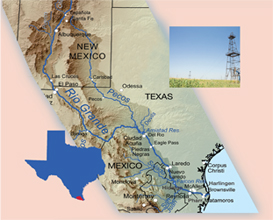Other Challenges
While the big issues generally get more attention, there are a number of other challenges plaguing the industry. Food safety, for one, is having a profound and costly impact as consumers, especially millennials, seek better, healthier, safer produce on retail shelves and in produce bins.
In 2014 the Produce Traceability Initiative and food safety were front-and-center issues for Camacho. This year, he says, the U.S. Department of Agriculture (USDA) and the Food and Drug Administration (FDA) will push distributors like himself to help Mexican growers comply with regulations, which will cost money that eventually trickles down to the consumer.
For García, the biggest problem in 2014 was security on the roads. Even before a truckload of its signature guavas was hijacked in August 2014, the company had already looked into having cargo insurance for every load.
Since the guavas went missing, however, every load bound for Sweet Seasons carries insurance. “It takes a while to move a truck, so I would think you steal something high-value and easy to sell like avocados,” he says. “I can’t imagine what they ended up doing with a whole truckload of guavas.”
Ongoing delays at border crossings are a problem for Salinas at Bonanza 2001. Even at the Pharr International Bridge, with its cutting-edge technology, the lines are long. If he has ten trucks coming in, only seven will get through because of backlogs, and the process repeats itself the following day. He’d like to see expansion: more lanes, more people scanning trucks, more efficient systems.
“If they’re processing 1,000 trucks a day and 800 make it but 200 don’t, then expand it,” he declares. “Every time a truck crosses or doesn’t cross, there’s a cost involved.”
The Economic Engine That Could
Returning to Texas A&M’s Center for North American Studies, fruit and vegetable imports from Mexico to Texas are predicted to grow an astonishing 73 percent between 2012 and 2020. During this period, jobs in Texas related to produce imports will likely grow from 3,000 to 7,000 and the Rio Grande Valley will be playing a crucial role as the destination of so many Mexican imports.
Ironically, the region that was once one of the country’s produce-growing powerhouses will now benefit from its proximity to Mexico and the public’s appetite for year-long fresh produce.
“Competition is good and you have to find your way,” reflects Szutz, who says the enactment of the North American Free Trade Agreement back in 1994 “crippled the Texas produce industry” because growers were unable to compete with Mexico’s lower costs. Now, however, Texas is gaining a substantial advantage from this low-cost, high-yield production.
For the future, Erickson says, “We need more capacity at our bridges, improved infrastructure, and more resources. Are we ready for that kind of growth? Not today, but when it gets here, we will be.”
Image: Shutterstock



